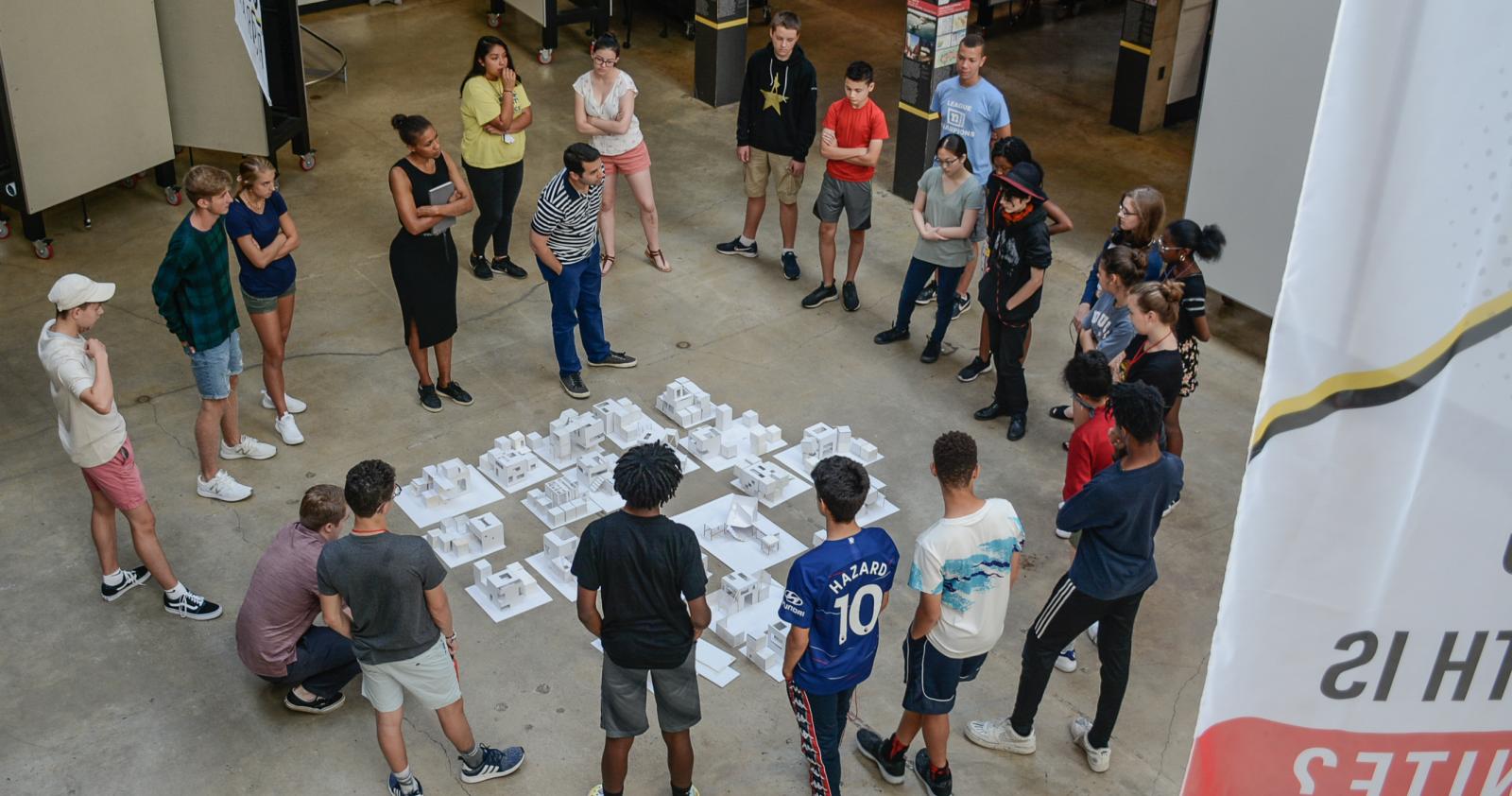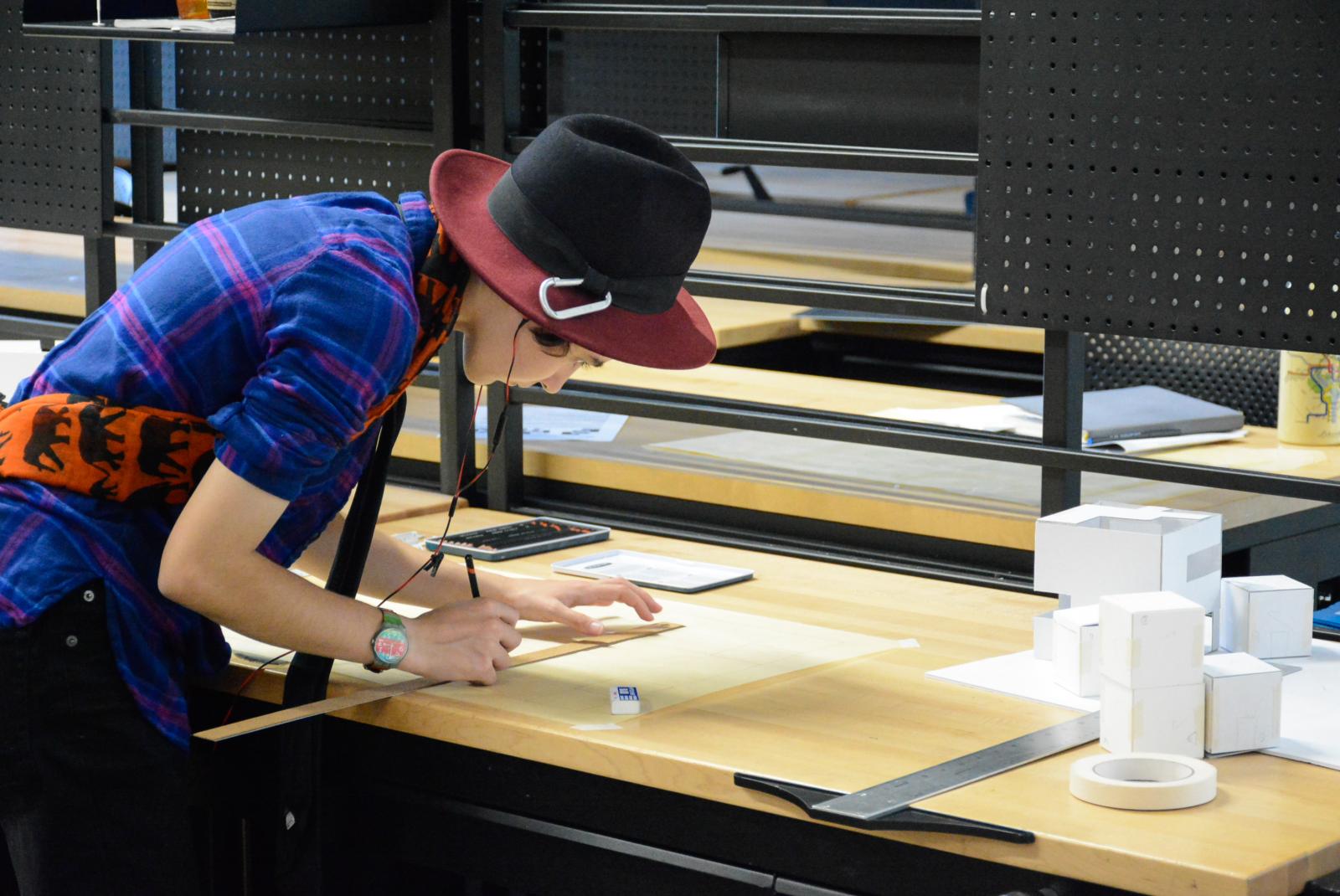For any architecture student, working in the studio three times a week is demanding enough.
In ARCH 150, however, an intensive three-week Terp Young Scholars course that introduces high school students to architecture education and the design process, students are required to work in the studio up to five times a week. Since much of the class had never taken a design course before, instructor Michael Abrams wanted to have the students complete hands-on projects and learn by doing, rather than listen to lecturing.
“Props to these guys,” said teaching assistant Gesine Pryor Azevedo, who was impressed with the students’ engagement and level of focus at the end of a long week. Pryor Azevedo, who is a second-year student in the Masters of Architecture program, said by the end of the course, high school students considering a career in architecture get a good exposure to the demands of studying architecture. Through the work of designing, sketching and building models, students learn valuable skills, like how to manage time, how to prioritize work and how to be practical.
Kelly Sullivan, a rising senior at Archbishop Spalding High School in Anne Arundel County, said that taking ARCH 150 has solidified her desire to pursue an architecture degree in college. Sullivan said her interest sparked four years ago during MAPP’s architecture camp for middle schoolers, and that ARCH 150 was “the decider.” Kira Grewolls, who traveled all the way from her home in Chemnitz, Germany, to join the course, said she could not find similar programs for high school students in Germany “as intense” as UMD’s.
For the final project, the class designed pavilions based on one of five different themes: “Ceremony,” “Ritual,” “Contemplation,” “Dialogue” and “Tension.” Students presented sketches and models of their pavilions on the last day of class in front of family and professional architects for critique. Aside from the required design elements—to include five walls, two reflecting pools and one monolith—“the rules were very lenient and undefined,” said teaching assistant Kyle Huck (B.S. Architecture ‘17). “What they did with [their pavilions] was very much up to them.”
As for Abrams, he wanted the students to use their creativity without lots of restrictions.
“There are definitely some young architects in the room,” said Huck.
Abrams agreed. “You can see talent.”


